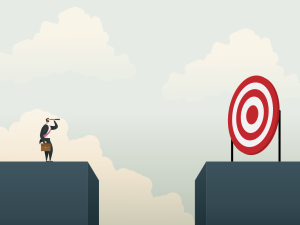Concerns are mounting about the U.S. heading into a period of stagflation as some economic indicators point to low growth and sticky inflation. The latest jobs report, released by the Bureau of Labor Statistics last week, showed that the U.S. economy added far fewer jobs in the month of April than expected (175,000 vs. 240,000), raising unemployment to 3.9 percent. Weakening jobs growth, coupled with the most recent inflation reading of 3.5 percent—still way higher than the Federal Reserve’s 2 percent target—suggests to some that stagflation is around the corner.
Sign Up For Our Daily Newsletter
SIGN UP
If the combination of low growth and high inflation were not bad enough, stagflation is a unique tumor where medicating one often exacerbates the other, leaving the central bank between a rock and a hard place in deciding how to use its primary policy lever: raising or reducing the federal funds rate, a benchmark determining the interest rates of mortgages, credit cards, and other types of loans. Low economic growth must be dealt with by an expansionary monetary policy like reducing rates and increasing liquidity, but high inflation must be combated with exactly the opposite. Policymakers can either be rendered paralyzed with no real options to tackle the crisis or forced into drastic measures with slim chances of success.
The U.S.’s last memory of stagflation was in the 1970s when double-digit inflation and unemployment rates scarred the economy. To combat it, then Fed Chair Paul Volker hiked rates to 20 percent, a drastic and unprecedented move that forced the U.S. economy into a 16-month recession through November 1982. The good news was that the painful medicine worked.
“I actually lived it. I was a kid but I remember how painful it was,” Diane Swonk, KPMG’s chief economist, told Observer. “That’s not where we are today; stagflation today would require a pretty large increase in unemployment and a pretty large increase in inflation,”
During a press conference following the latest FOMC meeting, Powell was asked to comment on the risk of stagflation. “I was around for stagflation, so I don’t see the ‘stag’ or the ‘flation,’” Powell, 71, responded.
Michael Hartnett, Bank of America’s chief investment strategist, is one of the experts who call recent U.S. economic data “stagflationary.” “There is no doubt that the macro data in the U.S. is becoming more ominous…The labor market is cracking in the U.S., and at the same time there isn’t a human being in America that thinks inflation is getting to 2 percent,” Hartnett said in a Bloomberg Television interview in March.





